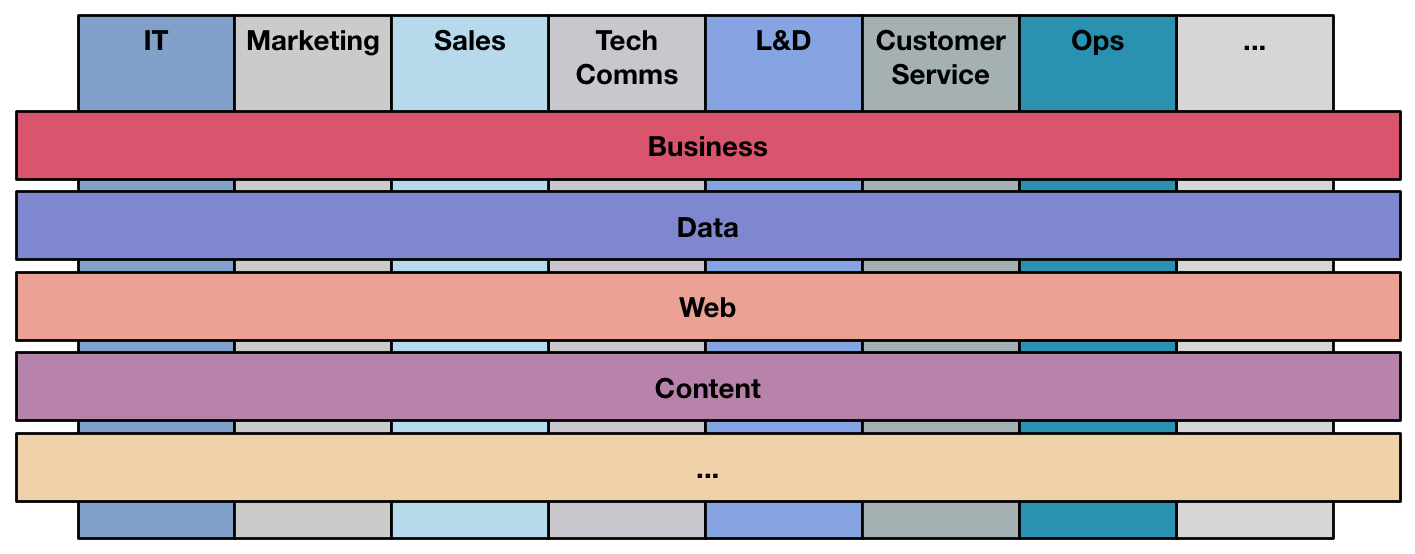I mentioned in my previous post that I was talking at the xAPI camp about content strategy, and on the way in I created a new diagram to convey a concept I wanted to discuss. Of course one of the things I agitate about for the revolution is that L&D can’t hide away but has to start engaging across the business. And, let me add, that’s only increasing. Our silos are breaking down. To wit:
 Here I was trying to think of activities that cross silos. So, of course, the overall role of the business aligns and integrates the separate actions of sales, marketing, IT, etc. And, to suit my campaign, I looked for others.
Here I was trying to think of activities that cross silos. So, of course, the overall role of the business aligns and integrates the separate actions of sales, marketing, IT, etc. And, to suit my campaign, I looked for others.
Obviously, data is coming out across the organization. As I mentioned in that last post, we can only look at the impact of L&D on performance if we can start working with data from the business units, but data from customer service influences marketing, and so on.
The web, too, is a channel for many activities. Units that reach customers, for instance, include customer service, customer education, sales & marketing, and more. Heck, the supply chain is increasingly connected by the web, and data.
Consequently, so too is content. Content is used in many ways, whether via apps, through the web, or print. And for many purposes: sales, marketing, tech support, and of course learning. And there’s a point to all this.
L&D, with it’s hard-wired content, needs to pull on the big kids pants, and start getting with content systems: content engineering, governance, and strategy. Truly, if you want to be part of the strategic picture going forward, you have to work with information tools. Industrial age methods won’t cut it. So, are you thinking about how to move to a content strategy?
Clark- this is where Ruben Tozman’s Learning on Demand and content strategy comes important. I have a platform that each client uses differently, and different roles use modules differently. So, although all content has SOME value to most users, the amount and depth of each topic varies wildly.
This requires significant breakdown of topics to they can be parsed and delivered to different parties, and requires a lot of metatagging at some level (my structuring is set up in a tool that facilitates delivery via folder structures and target audiences, but on the back end, it boils down to a form of meta-tagging, since it is reading the folders, audiences…).
The front end cost seems high, but the ongoing maintenance cost is very small. And, when content “breaks” it usually breaks in small parts where you can be nimble and respond modularly (and read it back in to larger content structures as a module).
I am currently dealing with a vast array of content (Help materials for existing software), but the same strategy will go with Experience designs (practice activities, assessments, etc.)
David, great story about what you’re doing. Hope you’re presenting it somewhere soon (Learning Solutions?). Exactly: content strategy is the first step to achieving flexible and even adaptive delivery.